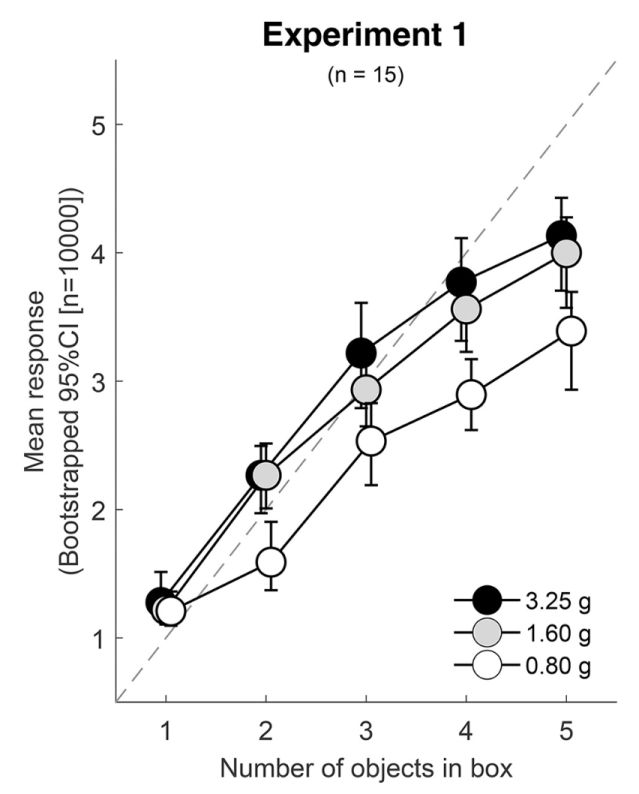Cognition
How We Count Hidden Objects
A new study reveals how we can use our haptic senses to count hidden objects.
Posted September 28, 2023 Reviewed by Gary Drevitch
Key points
- A new study examines what we can learn about the contents of a box by shaking it.
- Participants could distinguish between 1, 2, 3, 4, and 5 small spheres after 5 seconds of shaking a box.
- Even without visual or auditory cues, people can use haptic cues to estimate the number of objects in a box.
Is it possible to count objects you can't see?
If you've ever received a boxed gift, or a mysterious package from Amazon, you might have tried to lightly shake the box to try to guess its contents. Shaking a box can provide a surprising amount of information about what's inside: for example, it might allow us to distinguish between soft items like clothing and hard items like a book. Or we might get a sense of the size of the objects, their weight, or how many there are.
But are these guesses reliable? How often are our predictions after shaking a box actually correct?
A new study by Ilja Frissen and colleagues published this month in Perception sheds light on this question. In three experiments, the researchers examined whether people could accurately guess the number of spheres in a box by shaking the box for up to five seconds using haptic perception (the use of touch sensations).
In the first experiment, 15 participants were given small cardboard boxes and were told there could be 1, 2, 3, 4, or 5 small spheres inside. While wearing noise-canceling headphones playing white noise, they were instructed to shake each box and guess the number of spheres. The spheres were small and varied in weight between 3.5 grams and 0.8 grams, so that participants could not simply base their answers on the total weight of the box. The results showed that participants were remarkably accurate at estimating the number of spheres:

Despite overall accurate performance, there was a consistent bias: Participants tended to underestimate the number of spheres when the box contained 4 or 5 spheres. This bias was even more pronounced when the spheres were lighter.
The authors considered that restricting the set of possible answers (1 through 5) could bias participants or give them additional information that they would not normally have. So in their second experiment, a new group of participants completed the task without knowing the range of possible answers. In this case, performance was nearly identical to that in first experiment, showing the same level of accuracy and the same underestimating bias.
Testing the influence of weight
It could be that participants were using the overall weight of the box as a cue: Heavier boxes are likely to have more spheres than lighter boxes. In the third experiment, researchers equated the weight of all the boxes by using lighter spheres for the larger numbers and heavier spheres for the smaller numbers. The findings again showed consistently accurate performance, and a significant weight bias, in which lighter (and more numerous) spheres led to smaller number estimations.
This is not the first study to examine how we can use haptics to count invisible objects. An earlier study by Myrthe Plaisier and Jeroen Smeets (2017) designed a similar task and compared whether people could judge the number of objects in a small box using haptic plus auditory cues, compared to auditory cues alone. When shaking a box, participants could both feel and hear the spheres bouncing. The researchers recorded the sounds made when one group of participants shook the boxes, and presented those same sounds to another group of participants. They found that with audio-only cues, participants lost track of the number of spheres after 3. In other words, they couldn't tell the difference between the sounds made by 3, 4, or 5 bouncing spheres.
The current study shows that auditory information is not actually required. Even with noise-canceling headphones, participants were quite accurate, indicating that haptic cues alone are sufficient to estimate the number of spheres in the box.
Future studies could further explore what aspect of the haptic cues matter the most. For example, is it enough to just feel the bouncing balls, or is the act of shaking also necessary? Alternatively, one could shake a virtual box, hear the sounds, but not feel the haptic cues. Would the act of shaking in addition to the auditory information be sufficient?
Overall, these studies clearly indicate that when we shake a box we can gather a lot of information about its contents. This information does not depend just on the weight of the box and the sounds we hear as we shake it, but also critically on the haptic sensations on our hands.
References
Frissen, I., Kappassov, Z., Huang, K. Y., & Ziat, M. (2023). Humans can sense small numbers of objects in a box by touch alone. Perception, 03010066231201960.
Plaisier, M. A., & Smeets, J. B. (2017, June). How many objects are inside this box?. In 2017 IEEE World Haptics Conference (WHC) (pp. 240-244). IEEE.


